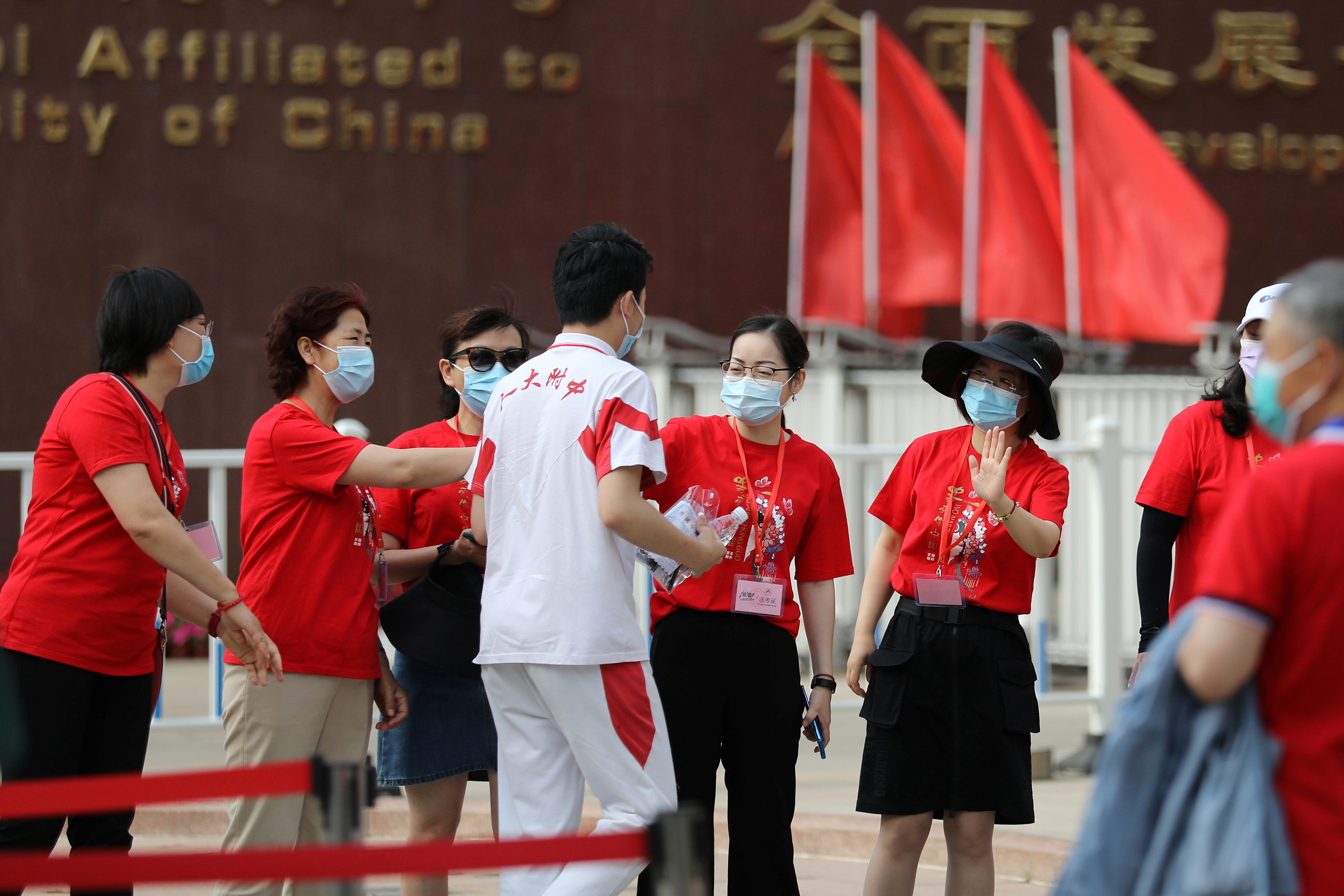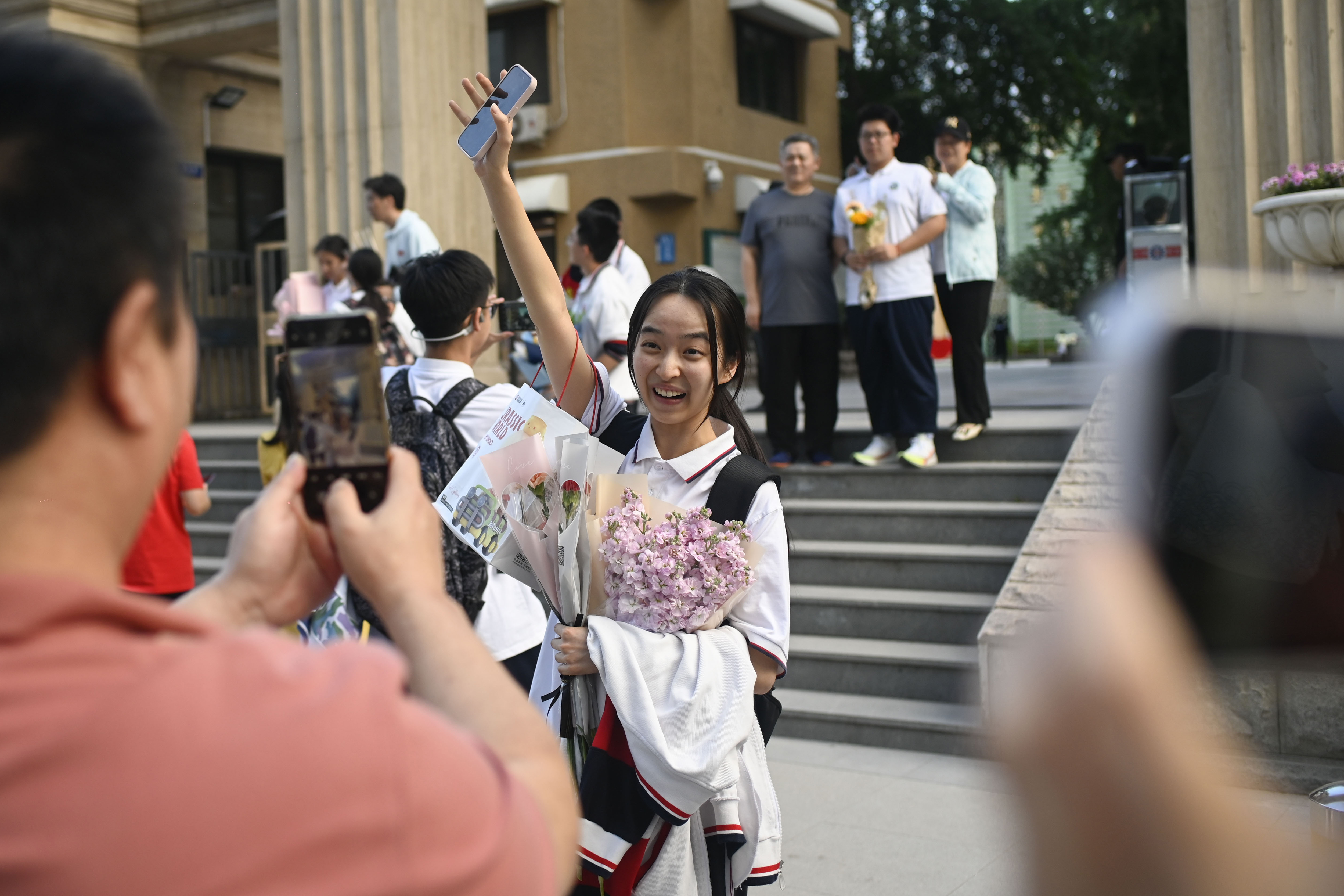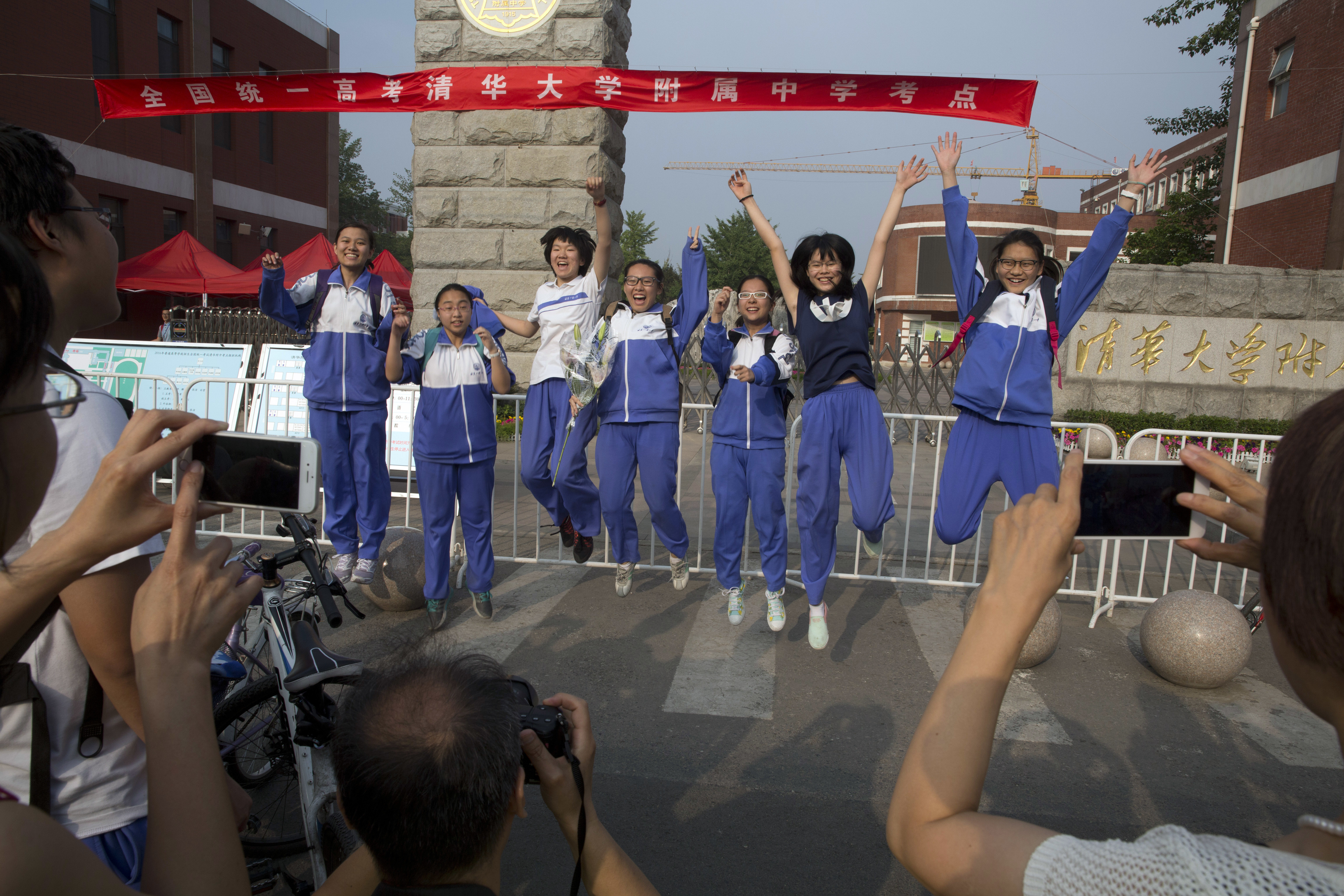
Some 13 million high school graduates across China are nervously awaiting a test result that will determine the rest of their lives.
The gaokao – a combination of the word “college” and “exam”– is regarded as one of the most important events in the life of any Chinese student. The exam consists of three mandatory subjects: Mandarin, English, and maths, with optional subjects including physics, history, and politics. Depending on the subject, participants spend between one and two and a half hours completing essays, multiple choice, and fill-in-the-blank type questions.
They will have spent 12 years preparing for the exam that will decide their careers and futures.
Still, the recent rise in unemployment – especially among young people – and China’s slowing economy have raised the stakes even higher for the young Chinese of the 21st century.
The gaokao is actually a fairly recent concept – introduced only in 1952 – but testing has long been a feature of Chinese society.
“A good scholar can become an official. He who excels in study can follow an official career,” the quote by renowned scholar Confucius, collected from 479 BC, sums up the situation of many during his time – no matter if you are in trade, agriculture, or service business, the only way to access power was through being a government “official”.
Ancient talk shows
Since the days of feudalism, the selection of talent irrespective of social class has been a defining feature of China with many inspired to become experts in fields such as military strategy, philosophy, and literature.
Nearly 2,000 years ago, during the Han dynasty, the process took the form of “talk shows” and was the pinnacle of cultural exchange at the time. Scholars and academics, regardless of their wealth or social status, performed commentaries on the political and social spectrum of the world on the first day of each month of the lunar calendar.
Hosts and guests who made impactful commentaries secured attention and praise from the public. They later became government consultants and even political figures.
Although the process was organised locally – standardisation over such a vast area would have been nearly impossible at the time – citizens in China learned they could gain status and popularity through their talents.

It was the Sui dynasty, founded in 581, that officially marked the birth of standardised testing.
With more scholars emerging from every corner of ancient China, Emperor Yang Jian started thinking of a way he could bring those talents together to serve his administration.
Finally, under imperial order, the Sui government began the Imperial Examination System (IES) – the largest and most influential exam in ancient times and a process that continues to influence students and academics even now. Through various exams, the IES connected culture, society, economy, and politics into a unified system – all to serve the emperor.
For scholars, the IES provided an opportunity for a decent job regardless of wealth, status, or family connections. For the Chinese at the time, there were no better job opportunities than serving the emperor, so many students wanted to score as high a score as possible on the exam so they would be selected as civil servants.
It all seems reminiscent of the British system of competitive examinations for the civil service, but as Sun Yat-sen, the founding father of modern-day China observed: “Almost all the examination systems nowadays are emulated from the British system. Going further back, the British examination system was originally learned from China.” Sun got a Western-style education in Hawaii and Hong Kong.
Conflict brings change
Like most examination systems, the IES also had its flaws.
Until the fall of China’s Qing dynasty in the early years of the 20th century, the IES was tailored to select scholars useful to the government. Tests were notoriously difficult but mainly focused on language and politics. Science and critical thinking skills were neglected with the best-performing students being the ones able to memorise facts and literature. Similar criticisms are also observed in Chinese students even today.
After more than 1,300 years, the last imperial examination took place in 1904.
It was the end of an era, but also the start of the modernisation of the exam system.
The Republic of China, which took the place of the Qing Dynasty, brought with it fresh ideas and concepts from the Western world, including the importance of science, military and industrial innovation, and cultural exchange.
Many prominent political figures such as Li Hongzhang and Zuo Zongtang advised the import of Western ideas into Chinese education – “Chinese Learning as Substance, Western Learning for Application.”
Led by scholars such as Cai Yuanpei – who realised the problems and limitations of the IES after studying in Japan, Germany, and France – a reform of the education system began to take place.
Colleges were allowed to develop exam topics and questions by themselves, and students could participate in multiple tests for different colleges, at the time of their choosing. The flexibility encouraged many more people to participate in college exams and ensured the most remarkable students got places at university. Qian Zhongshu, for example, a Chinese writer and literary scholar, was accepted to one of the country’s best universities after turning in an extraordinary performance in writing and literature. His score for maths was just 15/100.
Shortly after the end of the Civil War and the founding of the People’s Republic of China, the communist government established the gaokao with a set date every year.
The idea was to find China’s brightest stars – the young people with the talent and skills to help rebuild the country after WWII and the civil war.
After the disruption and chaos of the Cultural Revolution, the gaokao was reinstated in 1977. In that year, almost six million students participated in the exam, and 270,000 were accepted into university.

Many of the participants became social elites that ended up contributing their expertise in China and even the world, including former Premier Li Keqiang and world-renowned film director Zhang Yimou.
Since then, the number of gaokao participants has increased yearly, with a record 13 million high school students stepping into the academic “battlefield” in 2023.
Throughout thousands of years of evolution, standardised testing in China has inspired many but also created intense competition.
Pressure to perform in this “once in a lifetime opportunity” begins building in students’ minds as early as primary school with some parents turning to expensive tuition to help their children get the best grades.
As China has gotten richer, some families have opted out altogether – sending their children to foreign boarding schools or migrating – but for most families, the gaokao is, always has been, and always will be, the only path to success.
With reporting by Anson Zhang in Doha.







